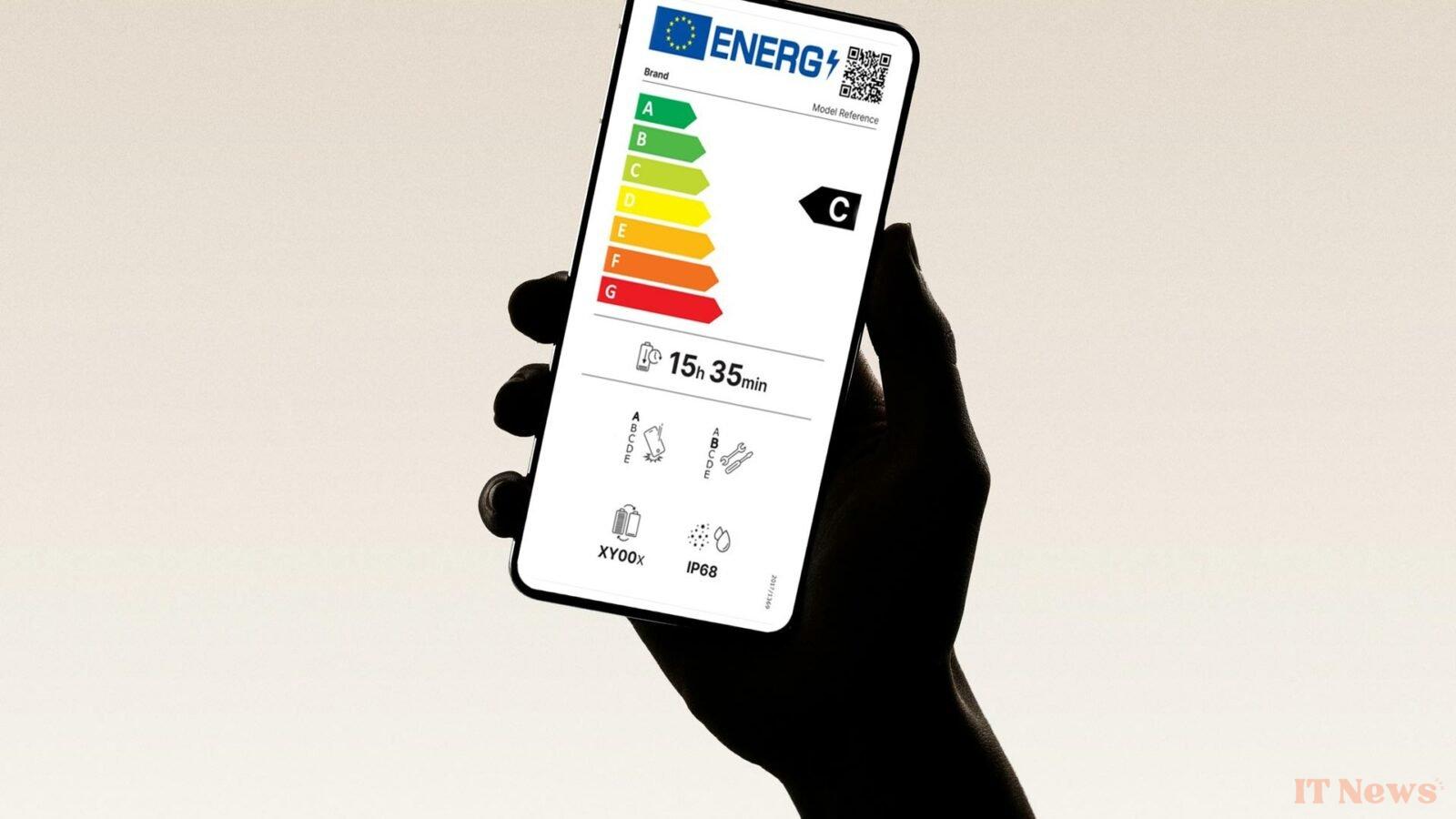Years after its appearance on household appliances, the energy label is making its debut on smartphones and tablets. Behind this familiar label lies a small revolution for European consumers, but what does this new label really mean and how will it change the way we buy?
What's changing on the label (and in your hand)
At first glance, the label is designed to be simple and visual. Gone are the technical jargon, replaced by clear indicators for comparing models at a glance. It displays:
- The brand and the model
- The QR Code: at the top of the label, a QR code opens the doors to the European EPREL database. Scan it to access a wealth of detailed technical information, much more comprehensive than on the physical label.
- The energy efficiency class (from A to G): as with household appliances, a color scale from green to red evaluates energy performance. But be careful, it's not just about raw consumption. The rating rewards devices that optimize their autonomy for a given battery capacity. An A-rated smartphone is therefore a champion of optimization.
- The battery life: indicated in hours and minutes, it gives you a concrete idea of the endurance of the device over a complete charge cycle, based on a standardized usage test (calls, web, video, etc.).
- Drop resistance (rated from A to E): This rating assesses its robustness against accidental drops from one meter. A class A device can withstand more than 270 drops without functional failure.
- The European repairability index (rated from A to E): For the first time at EU level, a repairability score is becoming mandatory for a product. It evaluates the ease of disassembly, the type of fasteners (screws are rated higher than glue), and the availability of parts.
- The battery longevity (rated from A to E): this pictogram indicates the number of full charge cycles the battery can withstand before its capacity falls below 80%.
- The protection against water and dust: the famous IP (Ingress Protection) rating is now clearly displayed, telling you whether your device is resistant to rain or can survive an accidental plunge.
- The number of the reference European regulation
Behind the label, a silent revolution
While the label is the visible part of the iceberg, the biggest change is invisible. It is backed by an ecodesign regulation that imposes drastic minimum standards on all devices sold in Europe. Concretely, manufacturers now have legal obligations:
- All smartphone batteries must withstand at least 800 charge cycles while retaining 80% of their capacity.
- All smartphones must withstand a minimum of 45 drops from one meter (35 drops for folding smartphones).
- Manufacturers must make essential spare parts (screens, batteries, cameras, etc.) available for seven years after the model's end of sale.
- Security and operating system updates are guaranteed for at least five years.
A perfect step forward? Not so fast...
While this regulation is a giant step forward, consumer associations such as Halte à l'Obsolescence Planmée (HOP) point out significant weaknesses. The most virulent criticism concerns the European repairability index. Unlike the French index it replaces for new models, it does not include the price of spare parts in its calculation. For the association, this decision goes "against the major progress made in France."
Thus, a phone could receive an excellent repairability rating because it is easy to disassemble, while being economically irreparable due to the exorbitant cost of its screen or battery. This is crucial information that the consumer will miss at the time of purchase. Another criticism is that the label presents a series of non-aggregated indicators. Whereas the French index gave a single, easily comparable score out of 10, European consumers will have to juggle six separate pieces of information to form their own opinion.
While the HOP association says it is "very disappointed" by this new label, the results are more positive for Que Choisir. The consumer association nevertheless expresses "some reservations" and indicates that the energy label is primarily the result of a compromise with manufacturers, authorities, and laboratories. "Commercial interest is never far away", adds UFC Que Choisir.
What this changes for you, the consumer
Despite its flaws, this new label gives you the keys to becoming a more informed buyer. We advise you not to limit yourself to the energy class, but to carefully examine the battery longevity and repairability ratings. These will determine the actual lifespan of your device. Don't hesitate to use the QR code to obtain all the important information.
Finally, remember that a slightly more expensive model with a better rating for durability and repair will likely save you money in the long run. This advice was already valid before, and it is even more so today.




0 Comments